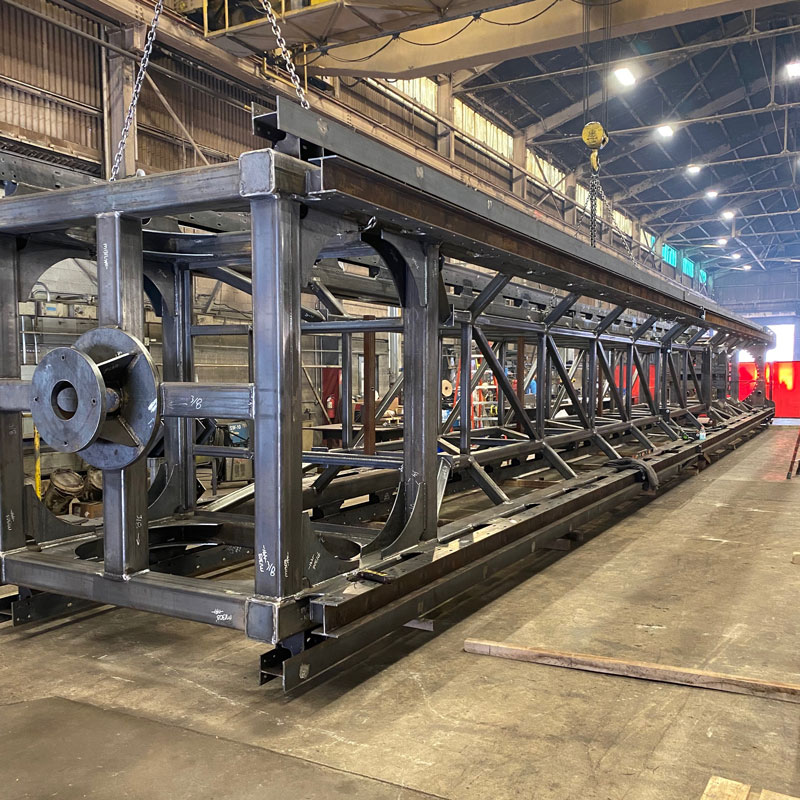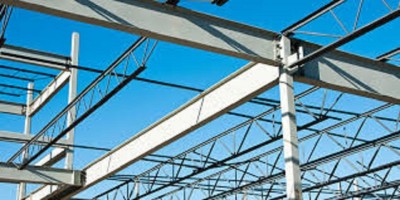Advanced Steel Fabrication Melbourne: Building the Future Today
Advanced Steel Fabrication Melbourne: Building the Future Today
Blog Article
Comprehensive Analysis of Cutting-Edge Techniques in Steel Fabrication Sector
As the steel fabrication market continues to evolve, the assimilation of advanced strategies has come to be necessary for staying affordable and fulfilling the needs of modern production standards. In this dynamic sector where technology plays a pivotal duty, recognizing the subtleties of these innovative strategies is not just a choice yet a need for those looking to create in advance in the ever-evolving globe of steel fabrication.
Laser Reducing Advancements
In the world of steel manufacture, laser reducing improvements have actually transformed the accuracy and performance of steel shaping processes. By taking advantage of the power of focused laser beams, makers can currently accomplish unmatched degrees of precision when cutting through various sorts of steels. This modern technology allows elaborate styles to be carried out with very little product wastefulness, making it a cost-effective remedy for sectors needing high precision components.
Among the vital advantages of laser cutting is its capability to manage a wide variety of products, consisting of stainless-steel, light weight aluminum, and carbon steel, easily. The procedure produces tidy, burr-free edges, removing the demand for added completing steps. The non-contact nature of laser cutting reduces the threat of material contamination, resulting in higher quality end items.
Additionally, laser reducing equipments can be set to make swift, specific cuts, considerably reducing manufacturing time compared to traditional cutting approaches. This rate and accuracy make laser reducing particularly suitable for mass manufacturing environments where efficiency is paramount. As technology continues to development, laser cutting is poised to play a significantly essential function in the steel construction market.

CNC Machining Innovations
The advancement of CNC machining technologies has ushered in a new period of precision and effectiveness in the steel fabrication sector. Computer System Numerical Control (CNC) devices have revolutionized steel fabrication by offering unmatched precision and repeatability in the manufacturing process. steel fixing. One of the key technologies in CNC machining is the combination of innovative software program systems that allow real-time monitoring and modifications, leading to improved productivity and quality assurance
In addition, the growth of multi-axis CNC makers has enabled for the construction of intricate steel parts with elaborate layouts that were formerly challenging to generate. These devices can execute a large range of machining operations, including milling, drilling, transforming, and grinding, all with high levels of accuracy.
In addition, the unification of automation and robotics in CNC machining has structured manufacturing procedures, lowered preparations, and minimized the margin of mistake. This assimilation of advanced technologies not only increases effectiveness however likewise makes sure constant top quality across all produced steel components. Finally, CNC machining developments remain to drive innovations in the steel manufacture sector, establishing new standards for precision and efficiency.
Automated Welding Technologies
Automated welding modern technologies have reinvented the steel manufacture industry, improving efficiency and accuracy in the welding procedure. These sophisticated modern technologies use computer-controlled systems to automate the welding process, leading to greater efficiency levels and improved weld top quality. One of the vital advantages of automated welding is the capability to perform intricate welds with regular accuracy, reducing the possibility of mistakes and remodel.
Robot welding systems are at the center of automated welding innovations, offering unmatched rate and precision. These systems can take care of a variety of welding tasks, from basic to detailed, easily (Alpha reo). By using advanced sensors and software application, robot welders can adapt to variations in product and joint geometry, making certain an uniform and trustworthy weld
Furthermore, automated welding innovations boost work environment safety and security by lessening the direct exposure of human welders to harmful fumes and extreme warmth. As the steel fabrication market remains to evolve, integrating automated welding technologies will certainly be vital for companies seeking to stay affordable and satisfy the expanding demands for high-grade bonded products.
Robotics Combination in Fabrication
Using robot systems in construction procedures has come review to be a crucial approach for improving efficiency and accuracy in modern-day production settings. Robotics assimilation in steel construction offers a myriad of advantages, consisting of raised efficiency, enhanced top quality control, and improved precaution. These sophisticated robotic systems are equipped with innovative sensing units and shows capacities, enabling them to carry out elaborate jobs with a high level of precision and repeatability.
Among the crucial advantages of robotics assimilation in steel construction is the capacity to automate recurring tasks, such as material handling, reducing, welding, and assembly procedures. This not just speeds up manufacturing cycles however also lowers the danger of human error, bring about higher total product quality. Additionally, robotics can run 24/7, substantially increasing production outcome and meeting tight task due dates.

3D Printing in Steel Production
Having transformed the steel construction industry with robotics combination, the expanding expedition of 3D printing in steel manufacturing is positioned to further breakthrough the realm of contemporary production strategies. 3D printing, Click This Link also called additive production, provides extraordinary style liberty and complexity, allowing the creation of detailed steel structures that were formerly unattainable with conventional manufacturing techniques. By using computer-aided style (CAD) software, makers can specifically manage the layer-by-layer deposition of steel material, try here leading to parts with boosted geometries and capabilities.
Among the vital advantages of 3D printing in steel manufacturing is its capability to lower material waste significantly. Unlike subtractive production procedures where excess product is cut away, 3D printing just utilizes the needed amount of steel required for the final part. This effectiveness not just brings about set you back savings but likewise aligns with sustainable production techniques by minimizing environmental effect.
Additionally, 3D printing allows rapid prototyping and customization, enabling the production of little batches of intricate steel parts with brief preparations. As the technology continues to grow and end up being much more accessible, its integration right into mainstream steel fabrication processes is expected to drive advancement and effectiveness throughout the market.
Verdict
To conclude, the steel fabrication sector has seen substantial innovations in strategies such as laser cutting, CNC machining, automated welding, robotics assimilation, and 3D printing. These cutting-edge technologies have reinvented the method steel items are made, bring about increased effectiveness, accuracy, and cost-effectiveness. Continued financial investment in these ingenious methods is critical for the market to remain competitive and meet the needs of contemporary manufacturing procedures.
As the steel construction market proceeds to advance, the assimilation of advanced techniques has actually come to be necessary for remaining competitive and meeting the needs of contemporary production standards.One of the crucial benefits of laser cutting is its capability to deal with a wide array of products, consisting of stainless steel, light weight aluminum, and carbon steel, with simplicity.Automated welding innovations have revolutionized the steel manufacture market, enhancing efficiency and accuracy in the welding process.Having changed the steel construction sector with robotics integration, the burgeoning expedition of 3D printing in steel manufacturing is poised to further advancement the realm of modern-day manufacturing techniques.In verdict, the steel construction market has seen substantial improvements in techniques such as laser cutting, CNC machining, automated welding, robotics assimilation, and 3D printing.
Report this page